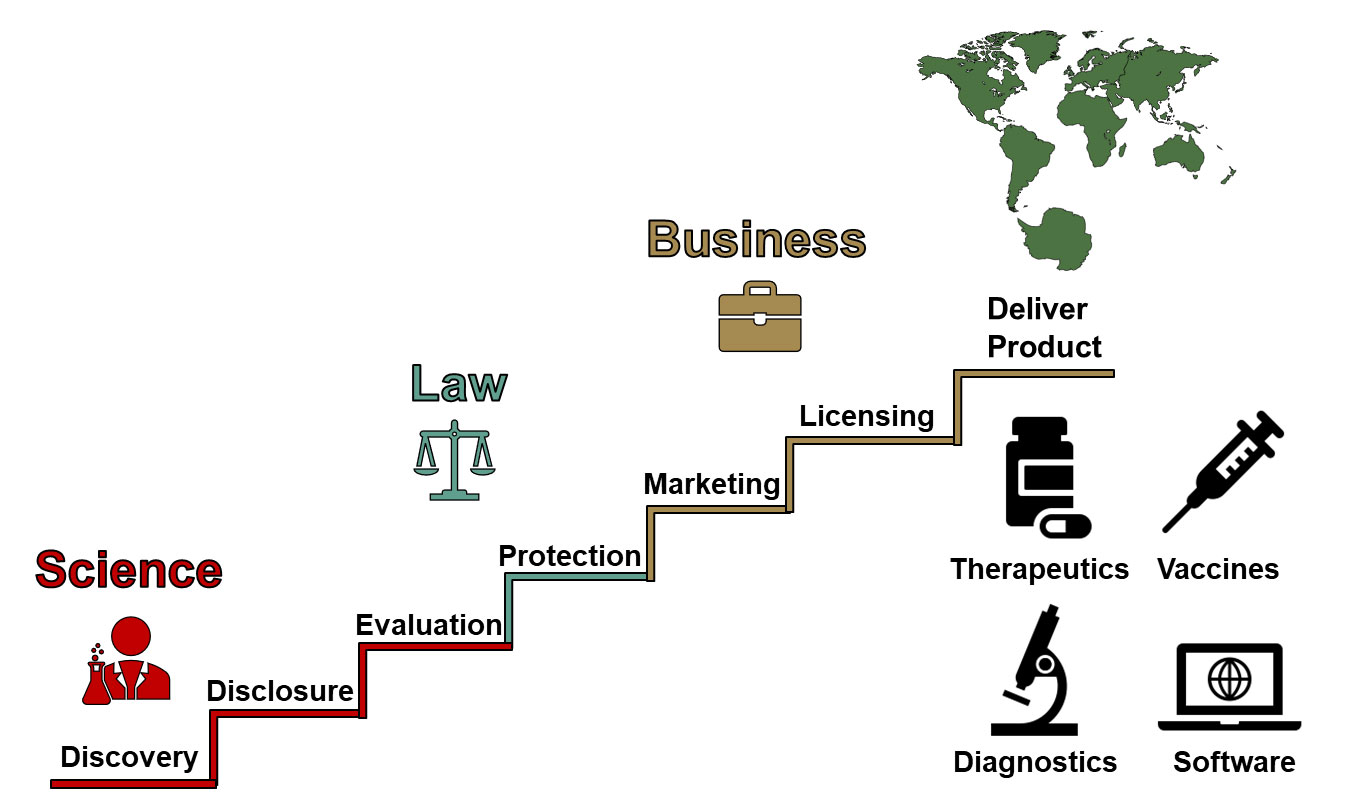Policy Shift Towards Sustainable Industrialization in Papua New Guinea
A recent report highlights the launch of Papua New Guinea’s (PNG) Manufacturing Policy and National Content Policy, signaling a strategic pivot away from the long-standing economic model of exporting raw materials. Prime Minister James Marape articulated a vision to end the export of unprocessed minerals, raw timber, and untransformed agricultural produce. This policy shift is a foundational step towards aligning the nation’s economic development with key tenets of the United Nations Sustainable Development Goals (SDGs), particularly those focused on economic growth, industrialization, and responsible production.
Aligning Economic Strategy with Sustainable Development Goals (SDGs)
The new policy framework is intrinsically linked to achieving several SDGs by fostering a more resilient, inclusive, and sustainable domestic economy.
SDG 9: Industry, Innovation, and Infrastructure
The core objective to process natural resources domestically is a direct effort to advance SDG 9. By developing secondary industries, PNG aims to:
- Promote inclusive and sustainable industrialization (Target 9.2) by adding value to its natural wealth.
- Develop domestic manufacturing capabilities, such as refining gold into bullion, processing timber into building materials, and transforming natural gas into petrochemicals.
- Upgrade infrastructure and retrofit industries to make them sustainable, a key component of building a resilient national economy.
SDG 8: Decent Work and Economic Growth
The National Content Policy is designed to ensure that economic activities generate broad-based benefits, directly supporting SDG 8. Key aims include:
- Achieving higher levels of economic productivity through diversification and value addition (Target 8.2).
- Promoting development-oriented policies that support productive activities, decent job creation, and entrepreneurship.
- Ensuring full and productive employment and decent work for all citizens by mandating greater national participation in major projects (Target 8.5).
SDG 12: Responsible Consumption and Production
By shifting from raw material extraction to domestic processing, the policy supports SDG 12 by encouraging more sustainable production patterns. This transition aims to achieve the sustainable management and efficient use of natural resources (Target 12.2), ensuring that more of the value derived from these resources is retained within the country to fuel sustainable development.
Critical Challenges to Policy Implementation and SDG Attainment
The successful translation of these policies into tangible outcomes faces significant hurdles. The primary challenge lies in establishing a conducive “enabling environment” necessary to attract investment and ensure the global competitiveness of PNG-made products.
The Imperative of a Conducive Enabling Environment
For the policies to materialize, several systemic issues must be addressed. These barriers directly impact PNG’s ability to achieve its SDG-aligned industrial goals.
- Infrastructure Deficits (SDG 7 & SDG 9): The lack of reliable and affordable electricity and other essential utilities presents a major obstacle to establishing competitive manufacturing operations.
- High Operational Costs (SDG 8): Elevated costs for security, accommodation, and general living make PNG a less attractive destination for Foreign Direct Investment (FDI) compared to other regional economies.
- Human Capital Gaps (SDG 4): A history of inconsistent educational policy has resulted in a workforce that may lack the necessary skills for advanced manufacturing, impacting productivity and product quality.
- Global Competitiveness: Finished products must compete internationally on quality, consistency of supply, and pricing. The high domestic cost structure currently threatens this competitiveness.
A Coordinated Framework for Sustainable Development
Achieving the vision outlined in the new policies requires a holistic and coordinated approach that addresses the foundational weaknesses in the national economy.
Recommendations for an Integrated Approach
- Policy Cohesion and Coordination: All government arms and policies must be interconnected and aligned to support the national industrialization agenda. Fragmented efforts will undermine progress.
- Investment in Foundational Pillars: Strategic investment is required to create an enabling environment conducive to industrial growth. Priority areas include:
- Developing reliable and affordable energy infrastructure (SDG 7).
- Strengthening security and the rule of law to reduce the cost of doing business (SDG 16).
- Reforming and investing in quality education and vocational training to build a skilled workforce (SDG 4).
- Fostering Strategic Partnerships (SDG 17): Creating a stable and cost-effective environment is essential to attract the FDI and public-private partnerships needed to build and sustain a domestic manufacturing sector.
Conclusion: From Policy to Action for a Sustainable Future
The launch of the Manufacturing and National Content Policies marks a critical aspiration for Papua New Guinea to harness its natural wealth for sustainable and inclusive development. However, policy pronouncements alone are insufficient. Without a concerted and sustained effort to rectify the systemic challenges within the enabling environment—spanning infrastructure, cost of living, security, and education—the nation’s resources will likely continue to be exported in their raw form. The successful implementation of this agenda is contingent upon a coordinated, cross-sectoral commitment to building a truly competitive and sustainable economic foundation, thereby turning policy goals into measurable progress towards the Sustainable Development Goals.
Analysis of Sustainable Development Goals in the Article
1. Which SDGs are addressed or connected to the issues highlighted in the article?
- SDG 8: Decent Work and Economic Growth: The article’s central theme is economic transformation through industrialization, creating local jobs, and increasing the value of national resources, which are core components of promoting sustained, inclusive, and sustainable economic growth. The “National Content Policy” directly addresses creating work for nationals.
- SDG 9: Industry, Innovation and Infrastructure: The launch of the “Manufacturing Policy” is a direct effort to build resilient infrastructure, promote inclusive and sustainable industrialization, and foster innovation. The article explicitly discusses developing secondary industries and the critical need for enabling infrastructure like reliable and affordable electricity.
- SDG 12: Responsible Consumption and Production: The policy shift away from exporting raw materials (minerals, timber, agricultural produce) towards local processing and value-adding represents a move towards more sustainable management and efficient use of natural resources, a key aspect of ensuring sustainable consumption and production patterns.
- SDG 7: Affordable and Clean Energy: The article identifies the lack of reliable and affordable electricity as a major barrier to industrialization and foreign investment. It states, “electricity must be reliable and be supplied at affordable rates,” directly linking the country’s economic goals to the need for sustainable energy infrastructure.
- SDG 4: Quality Education: The text laments that the “worker is absent often and not skilled enough,” and that education has been a “political football.” This highlights the connection between a skilled workforce, which is a product of quality education, and the nation’s ability to achieve its industrialization goals.
- SDG 17: Partnerships for the Goals: The Prime Minister’s call for “seamless public-private collaboration, and strategic investment” and the discussion on attracting Foreign Direct Investment (FDI) point to the importance of partnerships between the government, the private sector, and international investors to achieve these development goals.
2. What specific targets under those SDGs can be identified based on the article’s content?
-
Target 8.2: Achieve higher levels of economic productivity through diversification, technological upgrading and innovation, including through a focus on high-value added and labour-intensive sectors.
- The article’s main argument is to end the “era of exporting raw wealth” and develop secondary industries to “process our gold into finish products, that package our coffee for global markets, that turn our natural gas and oil into domestic energy and petrochemicals and that manufacture building materials from our own timber.” This is a direct call for economic diversification and a focus on high-value-added sectors.
-
Target 9.2: Promote inclusive and sustainable industrialization and, by 2030, significantly raise industry’s share of employment and gross domestic product.
- The launch of the “Manufacturing Policy” is the primary subject of the article, with the explicit goal of developing local industries. The “National Content Policy” further ensures this industrialization is inclusive by demanding that “Papua New Guineans must today be engaged in all facets of work.”
-
Target 12.2: By 2030, achieve the sustainable management and efficient use of natural resources.
- The statement, “IT is no longer acceptable for our minerals to be shipped offshore unprocessed, for our logs to be exported as raw timber, or for our agricultural produce to be sold with no local transformation,” reflects a policy shift towards more efficient use of natural resources by capturing their full value within the country rather than just extracting and exporting them raw.
-
Target 7.b: By 2030, expand infrastructure and upgrade technology for supplying modern and sustainable energy services for all in developing countries.
- The article stresses that for industrialization to succeed, the “enabling environment must be right,” specifically citing that “electricity must be reliable and be supplied at affordable rates.” This implies a need to expand and upgrade energy infrastructure to support economic development.
-
Target 4.4: By 2030, substantially increase the number of youth and adults who have relevant skills, including technical and vocational skills, for employment, decent jobs and entrepreneurship.
- The article identifies a key challenge as the worker who is “not skilled enough,” which makes PNG-made products uncompetitive. This directly implies the need to increase the number of people with relevant skills to support the new manufacturing sector.
-
Target 17.17: Encourage and promote effective public, public-private and civil society partnerships, building on the experience and resourcing strategies of partnerships.
- The Prime Minister is quoted as saying that achieving the new policy goals requires “seamless public-private collaboration, and strategic investment,” which is a direct articulation of this target. The article also discusses the conditions needed to attract Foreign Direct Investment (FDI), a form of public-private international partnership.
3. Are there any indicators mentioned or implied in the article that can be used to measure progress towards the identified targets?
The article does not mention official SDG indicators, but it implies several metrics that can be used to measure progress:
- Proportion of processed vs. raw material exports: A key measure of success would be a decrease in the export of “raw timber” and “unprocessed” minerals and an increase in the export of finished products like “building materials from our own timber” and refined gold.
- Level of national engagement in major projects: The success of the “National Content Policy” can be measured by the number and percentage of “nationals, both individuals and corporations” engaged in all facets of work on major projects.
- Competitiveness of locally manufactured goods: Progress can be measured by assessing if PNG-made products are “competitive both locally and internationally in quality, in consistency of supply and in pricing.”
- Cost and reliability of utilities: An indicator of an improved “enabling environment” would be a reduction in the cost and an increase in the reliability of electricity and water supply, making them comparable to other countries competing for FDI.
- Inflow of Foreign Direct Investment (FDI): The article suggests that the level of FDI attracted for “downstream processing” would be a direct indicator of whether the government has successfully created a conducive business environment.
- Cost of doing business: Metrics such as the cost of accommodation (comparing “K12,000 in PNG” to “K1,000 per week in Thailand”), security costs, and the availability of a skilled workforce are implied indicators of the business environment’s competitiveness.
4. SDGs, Targets and Indicators Table
| SDGs | Targets | Indicators (Implied from the Article) |
|---|---|---|
| SDG 8: Decent Work and Economic Growth | 8.2: Achieve higher levels of economic productivity through diversification and focus on high-value added sectors. | – Increase in the proportion of processed goods (e.g., finished wood products, packaged coffee) relative to raw material exports. – Growth of secondary industries’ contribution to the national economy. |
| SDG 9: Industry, Innovation and Infrastructure | 9.2: Promote inclusive and sustainable industrialization. | – Percentage of local individuals and corporations engaged in major projects. – Market competitiveness (price, quality, supply consistency) of “PNG Made” products. |
| SDG 12: Responsible Consumption and Production | 12.2: Achieve the sustainable management and efficient use of natural resources. | – Reduction in the volume of unprocessed minerals and raw timber being exported. |
| SDG 7: Affordable and Clean Energy | 7.b: Expand infrastructure and upgrade technology for supplying modern and sustainable energy services. | – Data on the reliability of electricity supply (e.g., frequency/duration of outages). – Cost of electricity and other utilities for industrial consumers. |
| SDG 4: Quality Education | 4.4: Increase the number of youth and adults who have relevant skills for employment. | – Availability of a skilled workforce for manufacturing and technical roles. – Rates of worker absenteeism. |
| SDG 17: Partnerships for the Goals | 17.17: Encourage and promote effective public-private partnerships. | – Level of Foreign Direct Investment (FDI) in downstream processing sectors. – Number and success of public-private collaboration projects. |
Source: thenational.com.pg







